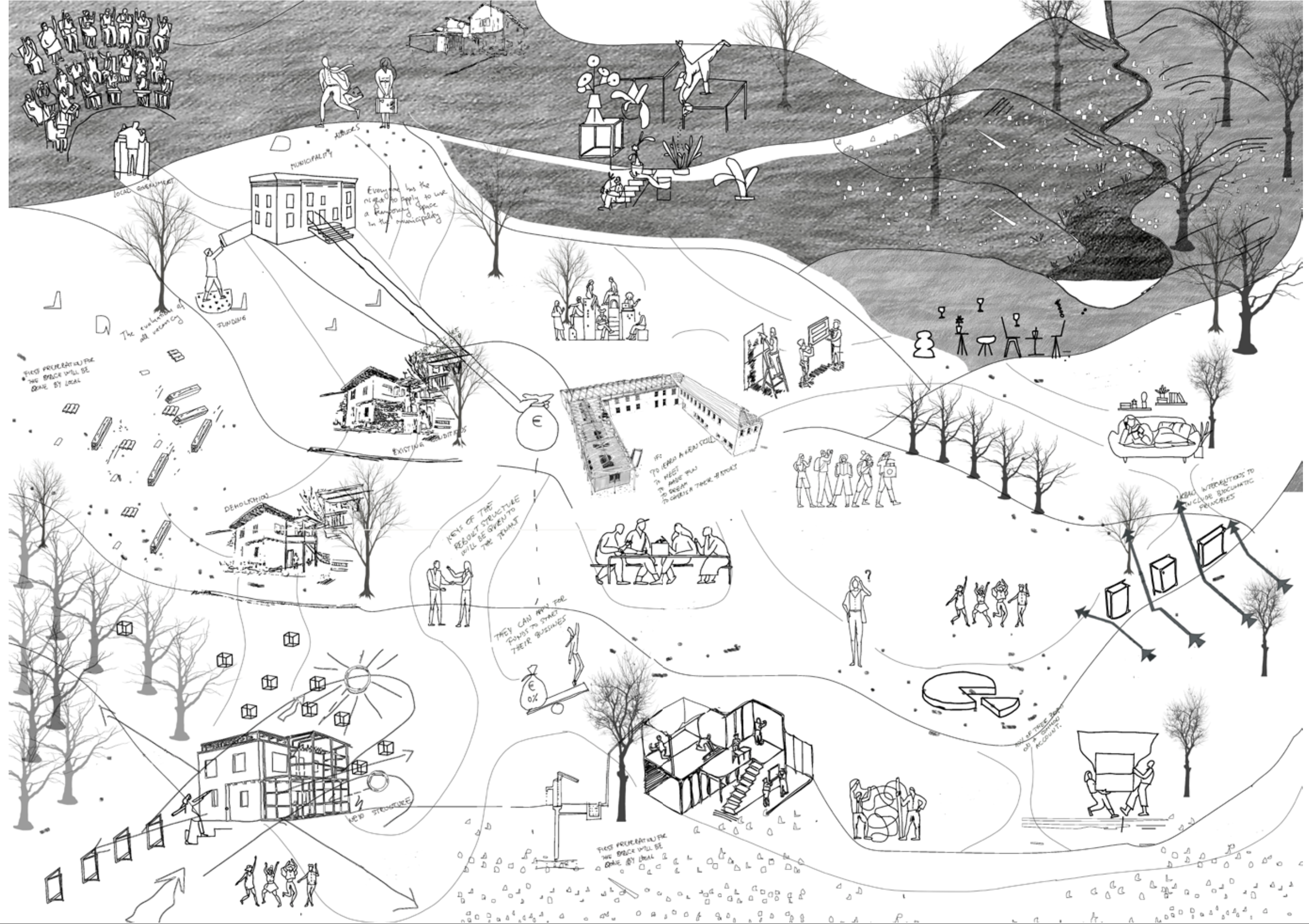>
`Ruin-Carnating Janjeva` Publication
Location: Ghent, Belgium
Author: Argjirë Krasniqi- ECOCIETY studies, as part of master thesis
Mentors: Prof.dr.ach. Marc Dujardin, KU Leuven, Belgium, ArCsus Lab & RAAAF studio from Netherlands
Designing spatio-cultural scenographies reconnecting the warchitectures of a township in dormancy to res- surective space-time concepts and imageries.
This research by design project is about WARchitectures of Janjeva town, about these vacant ruins which today, even 21 years after the country got its freedom, still struggles to treat them with the respect they deserve.
Janjeva is a town in Kosovo which in many ways is a very unique place. Historically known for being a mosaic of 6 different cultures and religions living peacefully together. Furthermore, the town is one of the onliest places within the country which did not experience war in a direct way. No people were killed inside its territory, and no houses were burned. However, war and other previous economic crises, created a big shift of city demographics which made thousands of people to leave this place, leaving behind more than 50% of the town abounded.
During her research, Argjirë created an atlas of vacancies, documenting each vacant building located in Janjeva. Hence, to know the space limits and how empty these little islands are, a volumetric drawing of the building `in one closed continuous line is done, making it ́s vacancy visible from inside or outside, but at the same time to leave some room for imagination. ́ 338 out of 600 of these vacant buildings are expecting to be demolished or turned into life again. From the dead ones, given up to gravity, to the sick ones which need a careful surgery in order to gain health, maintained and be ready to serve for another life.
The strategy to recover those houses is shown through a hand drawing sketch. Based on the quality, typology and category each of these vacant spaces have, they show different possibilities to be used in the future as well. The project intention is to use a bottom up approach of involving local inhabitants from the designing process to reconstruction, to revitalize and design minimal interventions which will provide flexible acting, movements and future possibilities of affordances. Hence, the proposal shows innovative approaches on the usage of private and public spaces, resilience of urban fabric, the role and environmental impact of temporary behaviourology and ways of reconstruction of vacant architecture, turning them as a strategic resource of economic development of the town of Janjeva.
́The wound is the place where the light enters you ́ , Rumie, Persie, 13th century


